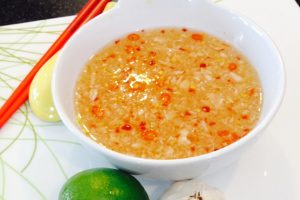
Chinese and Vietnamese fish sauces are lighter, placing a premium on the fish’s umami. Naturally, Thai fish sauce is the best fit for Thai dishes. To fit the more intense, stimulating flavour profile of the cuisine, the sauce tends to be more salty, so that it stands up to the other strong seasonings. It is paramount to Thai cuisine, as a component in dishes like sour and spicy chicken feet salad, yum som-o (pomelo salad) and goong chae nam pa (raw shrimps in fish sauce). The fish sauces sold in Hong Kong are respectively produced in Thailand, Vietnam and China. Which Countries Have The Best Fish Sauce? But the taste varies slightly due to differences in weather and technical details in production,” Chan says. “The principle of making fish sauce is the same among different countries. The sauce can now be found easily in bottle form across South-east Asia. Larger-scale fish sauce factories emerged in the following decades. From the famous oyster pancake to oyster congee to pan-fried tailfish, the fermented liquid has endless uses in the regional fare.

The locals would bring their own bottle or bowl as a container. This practice was still in place until the 60s and 70s in the Teochew-Shantou area of China. In the past, fish sauce was sold by cart-pushing hawkers on the streets. Even the ancient Roman Empire produced a version of fish sauce called garum.

The method has been adopted by Thai, Vietnamese, Chinese communities. The meat of the fish releases its juice after the while, and that is what we know as fish sauce. It first has fish marinated in salt and fermented in a container. Making fish sauce isn’t exactly rocket science.


 0 kommentar(er)
0 kommentar(er)
